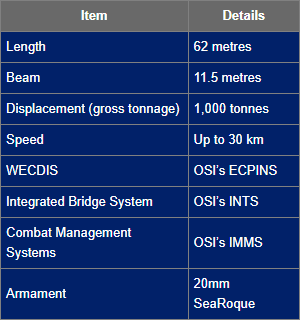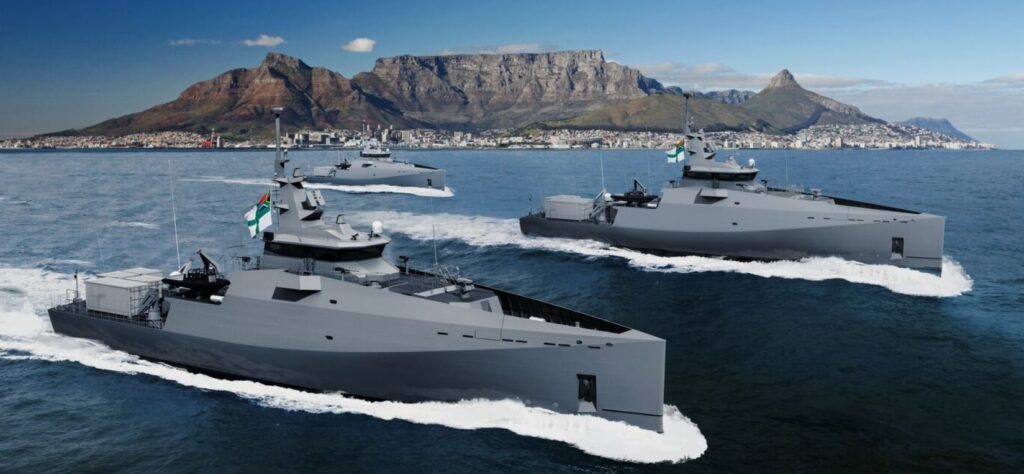South African Navy


Developed with OSI’s integrated navigation and tactical systems, the first new Multi-Mission Inshore Patrol Vessel (MMIPV), part of the South African Navy’s project BIRO, has completed its First Article Acceptance Test (FAAT).
The IPV, one of three being built at Damen Shipyards Cape Town in South Africa, will be used for coastal maritime activities, including patrol and protection of economic waters.
By using existing OSI technology, there was a minimal requirement for development, shortened delivery lead times, and the inclusion of low-risk tactical options. OSI engaged the customer, designing and providing an innovative bridge solution to meet their needs. The Company constructed the IPV with a navigation and tactical suite consisting of OSI’s Integrated Mission Management System (IMMS) in the operations center of the Biro IPV and Tactical Asset Control and Tracking (T-ACT) on board its small craft vessel.
All systems are based on OSI’s proprietary ECPINS Warship ECDIS (WECDIS). ECPINS is the only WECDIS independently certified against NATO WECDIS STANAG 4564.
The INTS is an integrated bridge solution in which ECPINS WECDIS is fully integrated with X-band and S-band radars, W-AIS, Inertial Navigation System, GPS, Optical Bearing Devices and various other navigation sensors.
The addition of IMMS and T-ACT adds to the tactical advantage of the combined system. The IMMS, designed specifically for Patrol Boats and OPV, provides situational awareness & understanding as well as tactical aids and weapon support. Integrating the various (combat) sensors and effectors with OSI ECPINS advanced WECDIS capabilities extend the extra tactical functions and the powerful OSI proprietary chart engine. OSI’s proprietary NavTac DDU provides tactical data distribution for both INTS and IMMS.
Successfully used by the SAN since 2014, T-ACT hosts independent WECDIS and W-AIS functionality on board small craft, providing (high-speed) navigation and Command and Control (C2) capabilities. C2 is arranged by enabling secure data exchange between the Mother Ship and associated Boarding Boat(s) in scenarios involving surveillance, suspect craft engagement, or operations at distance from Mother.
The same WECDIS and T-ACT functionality will also be installed on the SAN new Hydrographic vessel and it’s survey boats.

